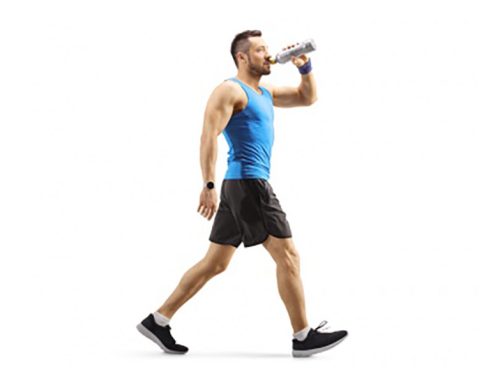Years ago, I wrote something in my Burn the Fat, Feed the Muscle e-book that people still talk about today. It was about cardio – and it made some waves:
“If I wanted to get as lean as possible, as fast as possible, I’d do cardio twice a day, seven days a week, until I hit my goal. Then I’d scale back to maintenance.”
That quote has been floating around for over two decades now, and not surprisingly, it still sparks debate and prompts questions…

Just recently, a reader emailed me and asked:
“Hey Tom, I read your original Burn the Fat e-book 21 years ago! Changed my life! I still refer back to it all the time. It’s my fitness bible. But I’m 50 now and I slipped a little and need get rid of some middle-aged spread. I have a question. Do you still believe in doing so much cardio, even twice a day, or have you changed your mind on that? I know you’ve updated some of your positions over the years.”
It’s a fair question. And the honest answer is: it depends.
Let’s dig into it.
What Is Double Cardio, and Who’s Doing It?
“Double cardio” usually refers to two formal cardio sessions per day.
When I say “formal cardio” I’m not talking about casual dog walks. It means cardio done with some effort, so it gets your heart rate up and gets you sweating.
I’m a huge fan of walking – It’s awesome for your health and enjoyable too, But it’s important to point out that what you define as “cardio” can change the whole conversation about cardio volume and frequency.
Do you consider two walks a day as double cardio? No debate needed there. Because that’s low impact and low intensity exercise, you could do that every day all year round with no downside except you don’t burn nearly as much fat and it’s less time efficient.
Many people don’t count walking as cardio, they consider it non-exercise activity, aka NEAT. And ironically some people accumulate 10,000 steps a day or even 15,000 steps a day and say, “I don’t do cardio, only lift.”
So to clarify and frame this whole conversation, I’m talking about formal cardio, specifically I’m referring to medium-intensity steady-state (MISS) cardio or high-intensity interval training (HIIT) cardio. It’s in this scenario where double cardio or super long sessions can get controversial.
Back in my competitive bodybuilding days, I’d often do 45 minutes of MISS cardio 6 – 7 days a week, usually including 1 or 2 HIIT sessions of 20 to 30 minutes.
And yes, I occasionally even did two cardio sessions a day of heart-pumping cardio in contest prep mode, especially if I thought I was behind schedule or I started prep after having bulked up in the off season a bit too much.
The results: dramatic fat loss. But remember, I was also training for a very specific and serious goal: getting to 4–5% body fat.
That kind of cardio volume isn’t necessary or sustainable for most people.
The Pros and Cons of Double Cardio
Let’s start with the upside.
The biggest benefit of more cardio is more calorie burn. It’s pure math: If you double your sessions, you double your exercise energy expenditure. When combined with a calorie-controlled diet, that always means faster fat loss.
So yes, double cardio can be an effective short-term strategy… IF you’re:
- Healthy and fit
- Following a strictly controlled nutrition plan
- On a deadline (e.g., competition or photo shoot)
- Able to recover without overtraining
- Staying injury-free
But for the average person with a job, a family, and limited time, doing two-a-days might not just be impractical, it might backfire, especially if you’re very heavy or have orthopedic issues.
This is especially true when people jump in too fast and too hard – doing HIIT every day or doubling up before even building a base level of fitness.
So… Do I Still Recommend Two Cardios A Day Or Not?
Yes and no.
I’m not against double cardio. In fact, I still believe it has its place. But it depends on:
- Your current fitness level
- Your injury history
- Your schedule
- Your goals
- Your time available
- And whether your nutrition is locked in
Plus, as I mentioned earlier, it also depends on the intensity. Walking twice a day? Sure! One hard morning cardio and an evening walk? Sure!
When we’re talking about formal cardio, for most people, I recommend starting modestly – three to five sessions of formal cardio per week for 20 to 45 minutes, depending on the intensity and your starting fitness level. That’s combined with resistance training and of course a calorie-controlled diet.
If fat loss stalls, and the diet is already in check, then it may be time to add more cardio.
The Feedback Loop: My Favorite Fat Loss Tool
As I explained in my book Burn the Fat, Feed the Muscle, the key to knowing how much cardio (or calories) you need is using a feedback loop.
Here’s how it works:
- Start with a reasonable cardio plan.
- Stick to it for 1–2 weeks.
- Measure your progress (weight, body composition, lean mass).
- If you’re making progress, stay the course.
- If you’re stuck, adjust: either eat less, increase cardio, or both.
This is how physique athletes make program adjustments, and you can use the same approach, even without stepping on a stage.
One More Thing: Cardio Is Not the First Priority For fat Loss
This surprises some people, especially when they hear it from me, a huge advocate of exercise, but…
You don’t need any cardio to lose fat.
Fat loss comes from the calorie deficit, not from how much cardio you do per se. You can establish a deficit by eating less, moving more, or a combination of both.
It’s easiest and the least time-consuming to establish your deficit by controlling your diet. Then once your diet is in place, adding cardio on top accelerates your fat loss even more than diet alone.
But remember this warning: Countless people pour time and energy into large amounts of cardio, but meanwhile they cancel out some or all of their deficit by eating back the calories they burned. Huge blunder!
Cardio will always give you fitness and health benefits, but it’s useless for fat loss unless you control your diet.
So When Does Double Cardio Make Sense?
Double cardio is a tool. It’s not mandatory and it’s usually not something you do all the time. But used wisely it can:
- Accelerate your fat loss if you think you’re losing too slowly
- Help you break through fat loss plateaus
- Make sure you hit a deadline when time is short
- Push you through the final few stubborn pounds, or reach ripped condition
If you have the time, the discipline, and the recovery capacity, double cardio can work amazingly well. If you don’t, that’s okay too. You can get lean without it, it may just take a little longer.
You see, choosing the right cardio or dieting strategy is about context – your personal goals, current condition, circumstances, and preferences.
What works for a competitive physique athlete prepping for a stage may be totally inappropriate for a busy parent just trying to drop 20 pounds without collapsing into the couch every night.
On the Burn the Fat Facebook page where I wrote a short post about this, Amy wrote:
Great post Tom. I competed in my 30’s and double cardio was a great tool used closer to a show to get stage lean. I’m 50 now, have a child, a different schedule and priorities have changed. So I can really relate to this. Thanks!
Choosing The Right Program Is Also About Risks Versus Benefits
To help you stop guessing about cardio (and diet), and start thinking critically about what works for you and your schedule and priorities, using a risk-to-benefit framework that considers the context is the ultimate approach.
That’s why I wrote my new Extreme Fat Loss guide:
Inside, I break down 12 fat loss strategies that are extreme, controversial or both, including double cardio, HIIT, LISS, fasted cardio, and more… also diet methods including keto, carnivore, fasting, the LGM diet and more.
Then I rate each one for effectiveness, sustainability, and health risks.
To check it out, follow this link to the Burn the Fat Inner Circle Store:
==> Extreme Fat Loss: The Risk To Benefit Guide
Train hard and expect success!
Tom Venuto






Leave A Comment